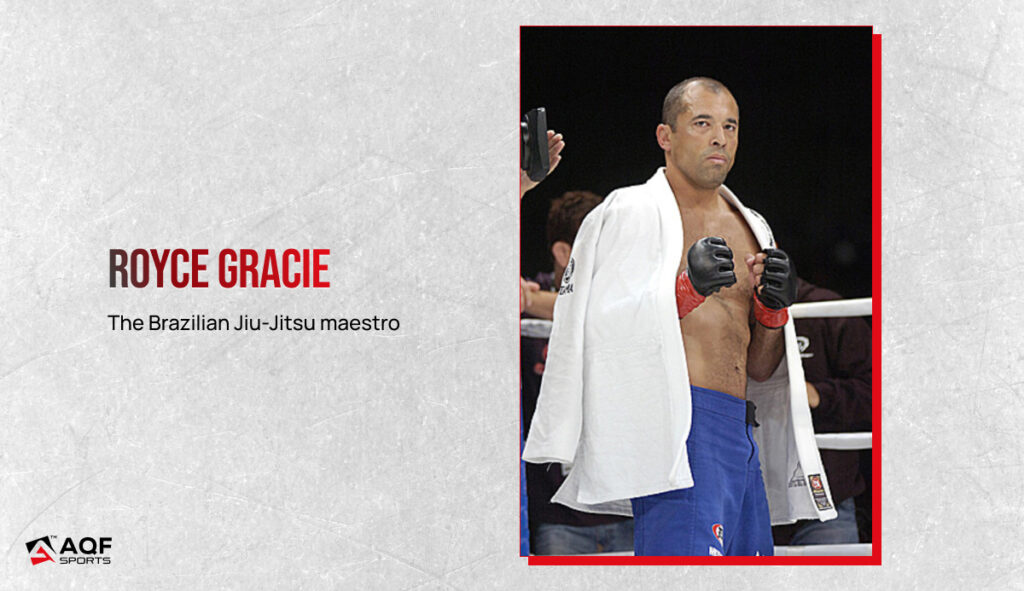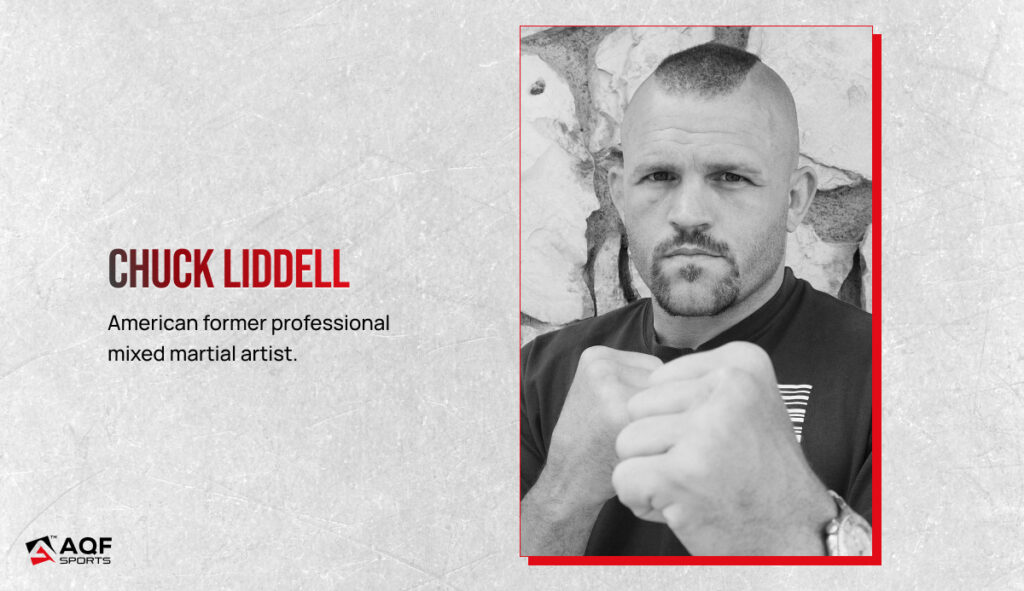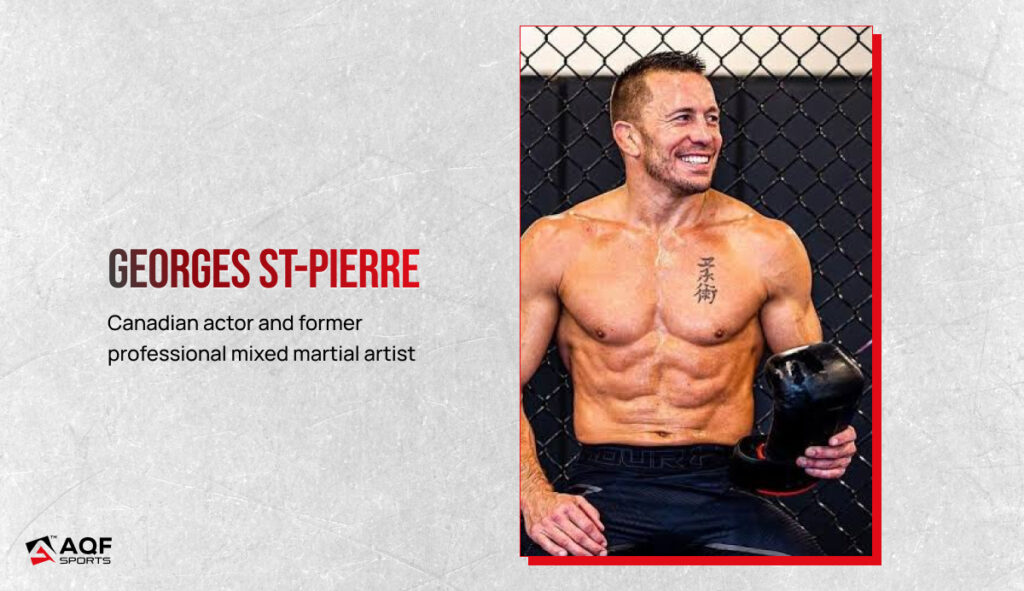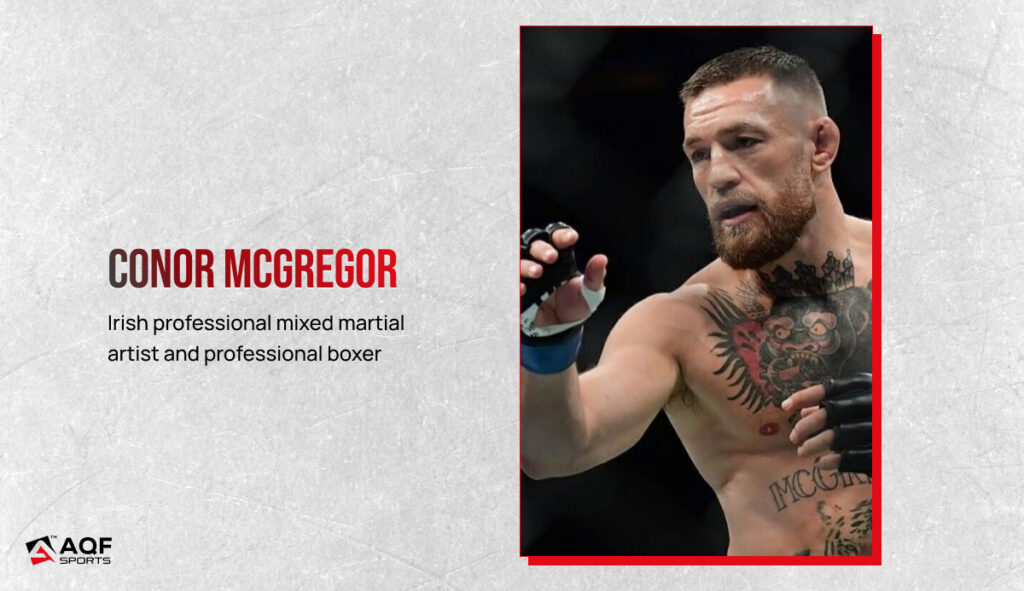Must-Know MMA Basics for Beginners

Mixed Martial Arts (MMA) is a dynamic combat sport that integrates various fighting techniques from disciplines such as boxing, Muay Thai, wrestling, Brazilian Jiu-Jitsu, and others. In an MMA bout, fighters engage in full-contact competition within a controlled environment, typically a cage or a ring, where they use a combination of striking and grappling techniques to outmaneuver and defeat their opponents. In this guide, I will show you:
- MMA Popularity and well-known MMA figures
- MMA Basic techniques for beginners
- Must-Have MMA Gear for Beginners
- MMA Basic Principles for Beginner Training
What sets MMA apart is its practical application and effectiveness in real-life situations, making it not only a sport but also a form of self-defense training. Beyond physical prowess, MMA fosters discipline, mental fortitude, and respect among its practitioners.
AQF Sport MMA Basic Starter Bundle for Beginners
Introducing the AQF Essential Series Bundle, the perfect starter kit for combat athletes of all levels. Our E-Series range of essential fight gear is meticulously designed to provide reliable training equipment at an affordable price point, ensuring accessibility without compromising quality. Crafted with both functionality and aesthetics in mind, our gear performs as good as it looks.
The AQF Essential Series Bundle includes:
- Boxing Gloves (10-16oz)
- MMA Grappling Gloves
- Shin Guards
- Head Protection
Combat athletes worldwide have embraced the AQF Essential Series, appreciating its durability, performance, and affordability. Join the global community of satisfied athletes and experience the reliability and quality of the AQF Essential Series Bundle.

MMA Basic Protective Equipment (Check it Out Here)
- Padding Thickness: Minimum 1 inch.
- Material: Durable synthetic leather or reinforced plastic.
- Fit: Snug and comfortable without restricting movement.

- Length: Typically 9-12 inches.
- Thickness: 1/2 inch for adequate cushioning.
- Material: Flexible neoprene or foam.
Suggested Read: Do Knee Pads Help? When to Wear Them?

- Length: 12-16 inches for full shin coverage.
- Padding Thickness: Minimum 1/2 inch.
- Material: Synthetic leather with padding.

- Weight: Should not exceed 1 pound for comfort.
- Padding Density: High-density foam for impact absorption.
- Material: High-density foam padding with a durable outer shell.

- Length: 108-inch or 180-inch options for wrist support.
- Material: Elastic cotton or polyester.
- Closure: Secure Velcro closure.

- Coverage: Should cover the entire elbow joint.
- Material: Neoprene or reinforced foam.
- Flexibility: Full range of motion.

- Compression Level: Adjustable for personal comfort.
- Material Thickness: Minimum 1/8 inch for support.
- Material: Breathable fabric.

- Thickness: Minimum 3mm for impact absorption.
- Fit: Custom-fit or boil-and-bite options.
- Material: Flexible, durable material.

MMA Basic Training Equipment (See All Equipment Here)
Thai Pads:
- Size: 16-18 inches in length, 6-8 inches in width.
- Weight: Should not exceed 3 pounds per pad.
- Material: Synthetic leather with dense foam padding.

Kick Shields:
- Size: 24-30 inches in length, 12-18 inches in width.
- Thickness: Minimum 2 inches for shock absorption.
- Material: High-density foam or durable vinyl.

Focus Mitts:
- Size: 9-10 inches in length, 7-8 inches in width.
- Weight: Lightweight, not exceeding 1 pound per mitt.
- Material: Synthetic leather with foam padding.

MMA Shorts (See All Here)
- Inseam Length: 4-6 inches for mobility.
- Waistband Width: 2-3 inches for secure fit.
- Material: Lightweight polyester or nylon with stretch panels.

MMA Gloves (Explore More Options Here)
- Weight: 4-7 ounces for sparring or training purposes.
- Padding Thickness: Minimum 1/2 inch for knuckle protection.
- Material: Durable synthetic leather with padding.
Suggested Read: Do Boxing Gloves Hurt More Than Bare Fists? (Damage Analysis)

When did MMA Become So Popular?
MMA’s rise to fame kicked off in the late 20th and early 21st centuries, especially during the 1990s when the Ultimate Fighting Championship (UFC) made its debut. Picture this: a time when combat sports enthusiasts were treated to a spectacle unlike anything they’d seen before. The UFC, born in 1993, brought together fighters from all walks of martial arts life, creating a melting pot of adrenaline-pumping action inside the octagon.
What made MMA so irresistible? It was the raw, unfiltered nature of the sport. Imagine tuning in and watching these modern-day gladiators go toe-to-toe, using a blend of striking, grappling, and submission techniques. It was like watching a real-life action movie unfold before your eyes, with plot twists and jaw-dropping maneuvers at every turn.
Royce Gracie, the Brazilian Jiu-Jitsu maestro whose dominance in those early UFC tournaments blew minds and shattered stereotypes. Here was a guy taking down opponents twice his size using nothing but technique and finesse. Gracie’s victories opened doors and minds, showing the world the true power of skill over sheer strength.

Then there’s Chuck Liddell, the embodiment of aggression and flair inside the octagon. His explosive style and larger-than-life persona captured the imagination of fans worldwide, turning MMA into must-watch TV. Liddell wasn’t just a fighter; he was a symbol of everything that made MMA so electrifying.

Georges St-Pierre, with his tactical brilliance and unmatched athleticism, took MMA to new heights. Watching GSP in action was like witnessing a master craftsman at work, blending technique, strategy, and sheer determination to conquer opponents in the most breathtaking fashion.

And of course, we can’t forget Conor McGregor, the Irish sensation who turned trash talk into an art form and backed it up with jaw-dropping performances inside the cage. McGregor didn’t just break records; he shattered them, captivating audiences and catapulting MMA into the mainstream like never before.

These fighters, along with a host of others, paved the way for MMA to become the global phenomenon it is today. Their blood, sweat, and tears transformed a niche sport into a cultural juggernaut, captivating audiences and inspiring generations of fighters to come.
Core MMA Techniques for Beginners
Versatility is everything in MMA success. Basic MMA techniques, drawn from various martial arts disciplines and form the core arsenal of any MMA fighter. Mastering these core techniques requires dedication, discipline, and consistent training. Through rigorous practice and strategic refinement, MMA fighters hone their skills to become well-rounded competitors capable of adapting to any situation inside the cage.
Here’s a breakdown of some key techniques:
Striking:
Striking forms the backbone of stand-up fighting in MMA. Fighters utilize punches, kicks, elbows, and knees to inflict damage and create openings for attacks. Effective striking techniques include jabs, crosses, hooks, uppercuts, roundhouse kicks, front kicks, and leg kicks.
Grappling:
Grappling techniques are crucial for controlling opponents and setting up submissions or ground-and-pound strikes. It encompasses takedowns, clinch work, and ground fighting. Techniques such as single-leg and double-leg takedowns, body locks, and trips are essential for gaining positional dominance.
Submission:
Submission techniques enable fighters to force opponents into submission through joint locks or chokes. Brazilian Jiu-Jitsu (BJJ) plays a significant role in MMA submission grappling, with techniques like armbars, triangles, rear-naked chokes, guillotines, and kimuras being commonly utilized.
Defense:
Effective defensive techniques are vital for mitigating damage and avoiding submissions. This includes blocking strikes, evading attacks, sprawling to defend takedowns, and maintaining proper positioning to prevent opponents from securing advantageous positions.
Transitioning:
MMA fighters must seamlessly transition between striking, grappling, and submission techniques depending on the flow of the fight. Smooth transitions enable fighters to capitalize on openings and maintain control over their opponents.
Should You Start with MMA or Any Other Martial Art?
You know, a lot of people will tell you to start with something like wrestling or boxing before diving into MMA. They say it’s all about building a solid foundation. And yeah, they’ve got a point. But you know what? It’s not the only way to go about it.
These days, you see specialists making waves in MMA alongside those who jumped straight into the sport. The thing is, starting with MMA means you don’t have to unlearn any habits that might not work in the cage. If you’re serious about MMA, that’s the way to go.
But hey, if you’re not sure about going pro, don’t sweat it. Just hit the gym and start training. And if there’s no MMA gym nearby, no biggie. You can kick things off with BJJ or Muay Thai. Every bit of training counts, you know?
At the end of the day, whether you specialize or dive headfirst into MMA, it’s all about putting in the work, staying tough, and being open to learning along the way.
MMA Basic Sub-Disciplines
In MMA, fighters draw from a variety of sub-disciplines, each contributing unique elements to their skill set. These sub-disciplines, rooted in different martial arts traditions, play crucial roles in shaping a fighter’s abilities inside the cage. Some key MMA sub-disciplines include:
- Boxing
- Muay Thai
- Brazilian Jiu-Jitsu (BJJ)
- Wrestling
- Judo
- Kickboxing
- Karate
How to Start MMA Training At Home for Beginners?
Starting MMA at home for beginners can be challenging but also rewarding. Here are some training components and tips to help you get started:
Strength and Endurance:
Begin with a focus on building overall strength and endurance. Incorporate bodyweight exercises like push-ups, squats, lunges, and planks into your routine. You can also include cardiovascular exercises like running, cycling, or jumping rope to improve endurance.
Striking Training:
Practice basic striking techniques such as punches (jabs, crosses, hooks, uppercuts) and kicks (front kicks, roundhouse kicks) in front of a mirror or with a punching bag if available. Focus on proper form, footwork, and coordination.
- Jab
- Cross
- Hook
- Uppercut
- Roundhouse kick
- Front kick
- Side kick
- Knee strikes
- Elbow strikes
- Footwork and movement patterns
Grappling Training:
While grappling is difficult to practice alone, you can work on solo drills such as shrimping, bridging, and sprawling to improve your grappling fundamentals. Watch instructional videos or enroll in online courses to learn basic grappling techniques.
- Takedowns (single-leg, double-leg, body lock)
- Clinch work
- Ground control positions (mount, side control, guard)
- Escapes from inferior positions
- Submissions (armbars, triangles, chokes)
- Sweeps and reversals
- Bridging and shrimping drills
- Proper posture and base
Footwork and Movement:
Pay attention to your footwork and movement patterns. Practice moving in and out of range, circling your opponent, and maintaining balance and agility. Good footwork is essential for both striking and grappling exchanges.
- Striking from top position (ground-and-pound)
- Maintaining dominant positions
- Transitioning between striking and grappling
- Creating openings for strikes
- Defense against strikes from bottom position
Shadowboxing and Visualization:
Shadowboxing is an effective way to practice striking combinations, footwork, and defensive movements. Visualize yourself in a sparring or competition scenario and imagine reacting to different attacks and situations.Click here to check our complete guide to Shadow Boxing.
- Blocking and parrying strikes
- Slipping and rolling to evade punches
- Sprawling to defend takedowns
- Guard retention and recovery
- Counter-striking techniques
- Clinch defense
Flexibility and Mobility:
Dedicate time to stretching and mobility exercises to improve flexibility and prevent injuries. Focus on areas commonly used in MMA such as hips, shoulders, and hamstrings.
Mental Conditioning:
Develop mental toughness and resilience by setting goals, staying focused, and pushing through challenges. MMA requires discipline, perseverance, and a positive mindset, so cultivate mental strength alongside physical training.
Benefits of MMA Training
MMA, or mixed martial arts, offers a range of benefits for practitioners:
- Physical Fitness: MMA training involves a combination of cardiovascular exercise, strength training, and flexibility drills, leading to improved overall physical fitness.
- Functional Strength: MMA workouts focus on developing functional strength that translates to real-world activities and movements, enhancing daily life activities and reducing the risk of injury.
- Weight Loss and Management: The intense nature of MMA training helps burn calories effectively, making it an excellent option for weight loss and weight management.
- Improved Cardiovascular Health: MMA training involves high-intensity interval training (HIIT), which improves cardiovascular endurance, heart health, and lung capacity.
- Stress Relief: Engaging in physical activity, particularly combat sports like MMA, releases endorphins, reducing stress levels and promoting mental well-being.
- Self-Defense Skills: MMA teaches practical self-defense techniques that can be applied in real-life situations, enhancing confidence and personal safety.
- Discipline and Focus: MMA requires discipline, focus, and dedication to progress and master various techniques, fostering mental discipline and concentration.
- Social Interaction and Camaraderie: Training in MMA often involves group classes and sparring sessions, providing opportunities for social interaction, teamwork, and building strong bonds with fellow practitioners.
- Increased Confidence: As proficiency in MMA techniques grows, practitioners often experience increased self-confidence and self-esteem, both inside and outside the gym.
- Goal Setting and Achievement: Setting and achieving goals, such as mastering a new technique or winning a match, are integral parts of MMA training, promoting a sense of accomplishment and personal growth.
Is MMA training safe for beginners?
With proper instruction, supervision, and adherence to safety protocols, MMA training can be safe for beginners. It’s essential to start gradually and prioritize technique over intensity.
Are there any alternatives to MMA for improving fitness and self-defense skills?
Yes, there are several alternatives to MMA, including traditional martial arts like karate, taekwondo, and judo, as well as fitness programs such as kickboxing, krav maga, and Brazilian jiu-jitsu.
What gear is essential for MMA training?
Essential gear for MMA training includes boxing gloves, MMA grappling gloves, shin guards, head protection, mouthguards, hand wraps, and appropriate athletic attire.
How do I know if MMA is suitable for me?
MMA may be suitable for you if you enjoy high-intensity workouts, want to learn self-defense techniques, and are willing to commit to regular training. It’s essential to consider your fitness level, goals, and personal preferences.
What are the potential risks associated with MMA training?
While MMA training offers numerous benefits, it also carries the risk of injuries, including strains, sprains, bruises, and fractures. Proper warm-up, technique practice, and protective gear can help mitigate these risks.
How can I find a reputable MMA gym or instructor?
Research local MMA gyms, read reviews, and visit facilities to assess their atmosphere, instructors’ qualifications, and commitment to safety. Look for gyms that prioritize proper technique, safety protocols, and a supportive learning environment.
Start Your MMA Journey Today!
MMA is an exhilarating sport ideal for those who enjoy high intensity, brutal sessions. If you want to improve your agility, endurance and balance, MMA is the perfect option to start training at home. Remember the MMA Basics for beginners which include: choosing essential gear, learning striking, grappling, submission and defense. Enjoy your MMA sessions!






